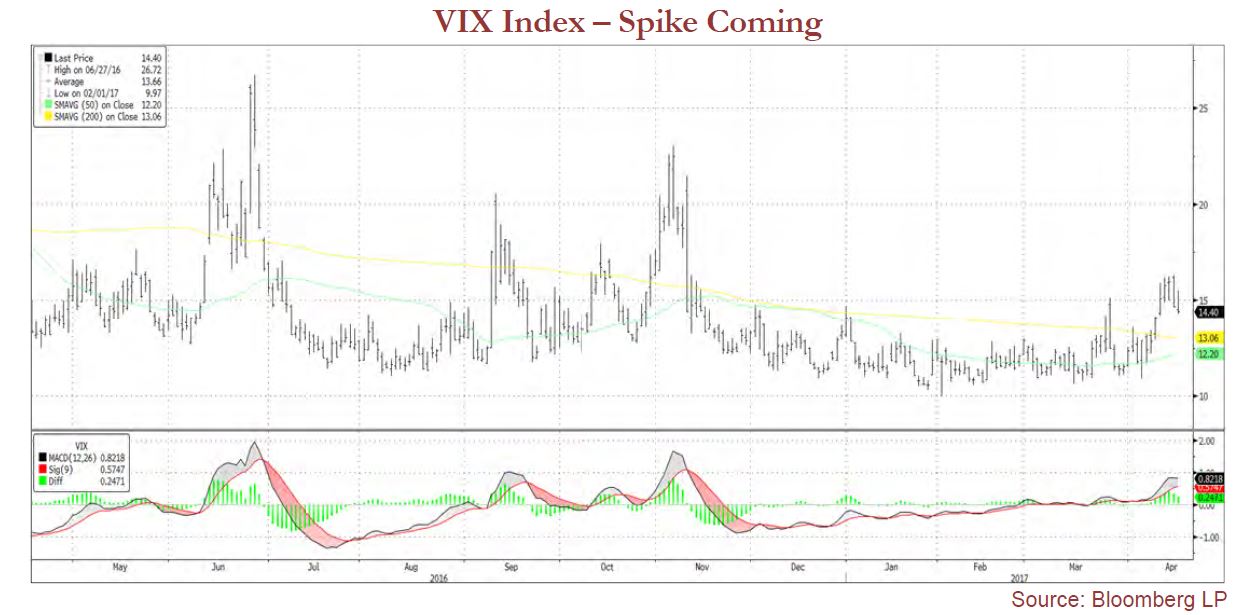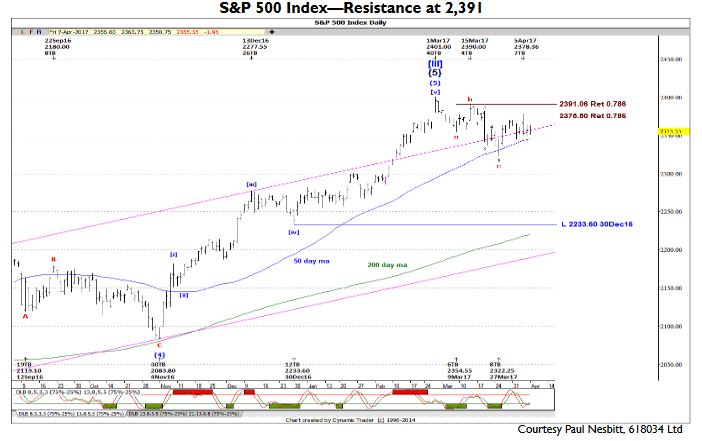Stock Indices:
| Dow Jones | 39,807 |
| S&P 500 | 5,254 |
| Nasdaq | 16,379 |
Bond Sector Yields:
| 2 Yr Treasury | 4.59% |
| 10 Yr Treasury | 4.20% |
| 10 Yr Municipal | 2.52% |
| High Yield | 7.44% |
Commodity Prices:
| Gold | 2,254 |
| Silver | 25.10 |
| Oil (WTI) | 83.12 |
Currencies:
| Dollar / Euro | 1.08 |
| Dollar / Pound | 1.26 |
| Yen / Dollar | 151.35 |
| Canadian /Dollar | 0.73 |
Biggest Risks to the Stock Market
Elections in Europe & the Efficacy of the European Union
The French election has tightened and recent polls have Melenchon, the Communist candidate (who advocates a top tax rate of 100%) polling up to 18%, Fillon is at 19%, while Le Pen and Macron are each at about 23%. Melenchon’s leap in the polls after the last debate, (there will not be another debate before the first round vote), is worth thinking about. A Le Pen-Melenchon second round contest between a man who wants to tax high incomes at 100% and Le Pen who wants out of the Euro would be a nightmare for the markets. The outcome of the French election could quickly cause the Euro to weaken and the Dollar to strengthen. A stronger Dollar would cause an ever-larger problem for Asian borrowers, who have at least tripled their Dollar debt outstanding since 2008. Emerging markets have sold trillions in Dollar debt since the Global Financial Crisis (GFC), leaving a strong Dollar as one of the potential catalysts for an emerging market melt-down similar to the Asian Crisis of 1997.

